Abstract
Because of the increasing emphasis placed upon land application as a means of wastewater disposal, it is important to evaluate the influences of different factors upon virus survival in soil. The objective of this study was to measure the effects of various environmental variables on virus persistence. Test samples of soil were placed in vials, and the soil was wetted with suspensions of virus in either distilled water, unchlorinated secondary sewage effluent, or mixtures of effluent and water. The viruses used were coxsackieviruses A9 and B3, echovirus 1, poliovirus 2, rotavirus SA11, and bacteriophages T2 and MS2. The rate of virus inactivation was evaluated statistically with regard to conditions under which the vials were incubated and to the soil characteristics. The factors that were found to influence virus survival were temperature, soil moisture content, presence of aerobic microorganisms, degree of virus adsorption to the soil, soil levels of resin-extractable phosphorus, exchangeable aluminium, and soil pH. Overall, temperature and virus adsorption to soil appeared to be the most important factors affecting virus survival.
Full text
PDF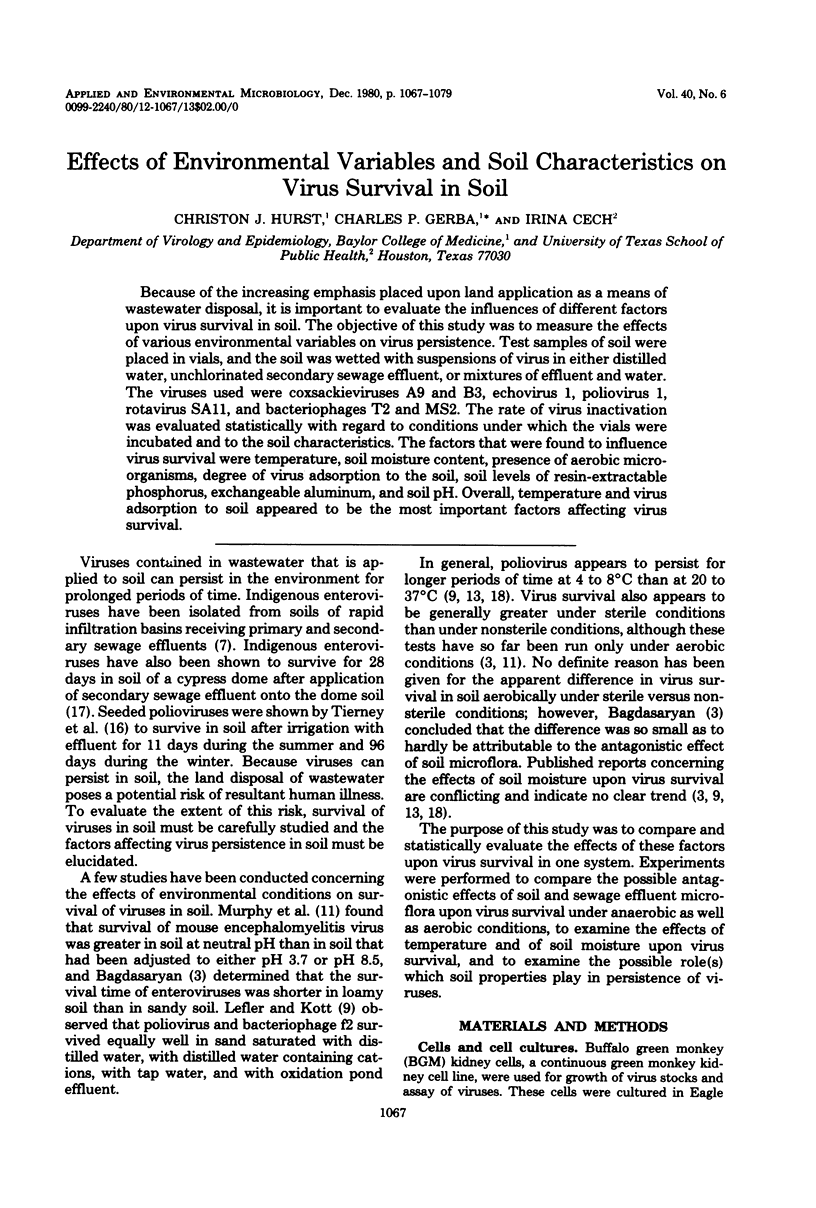
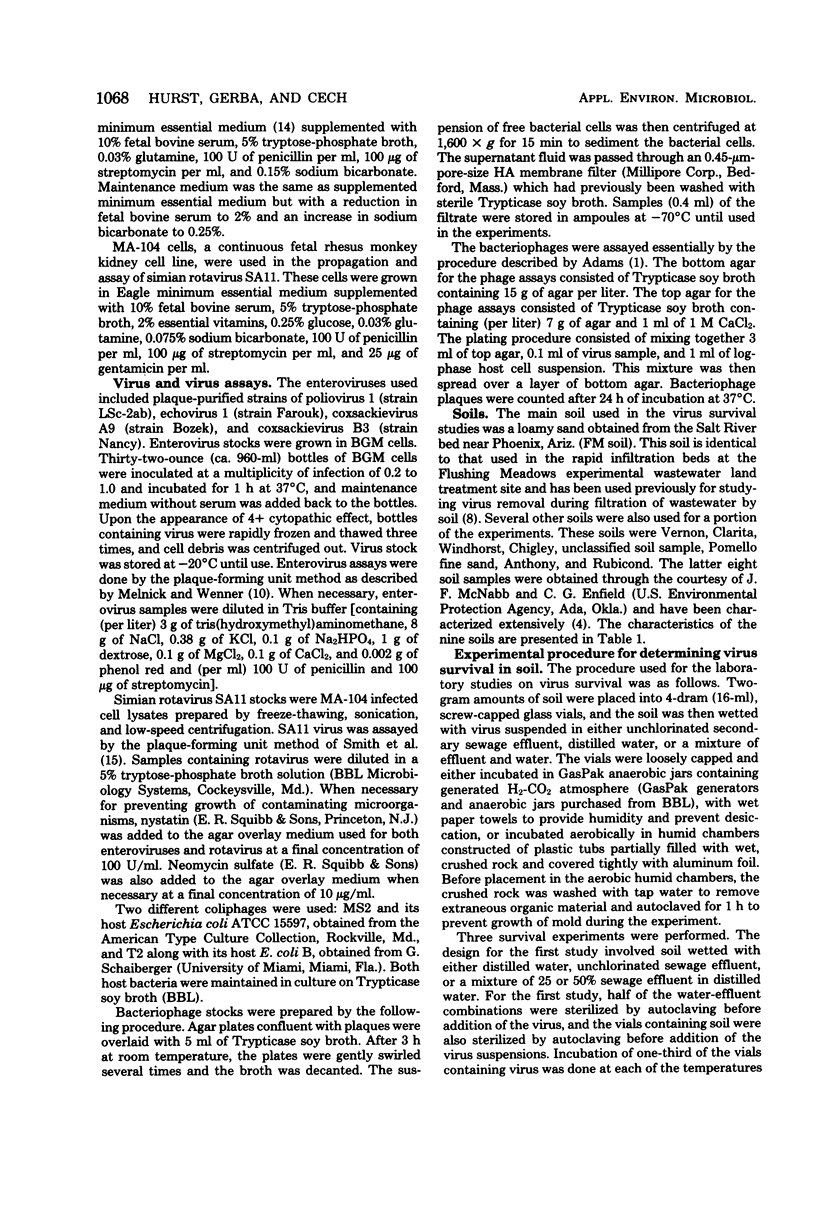
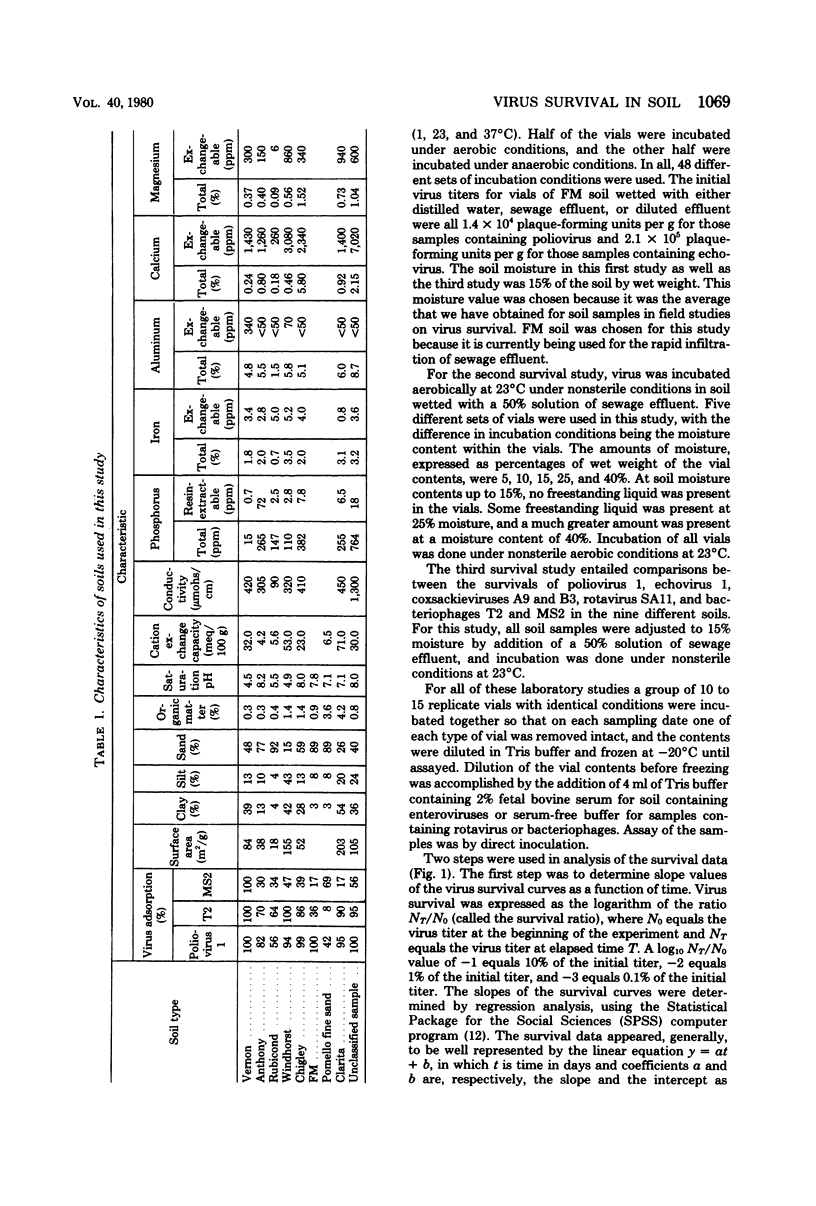
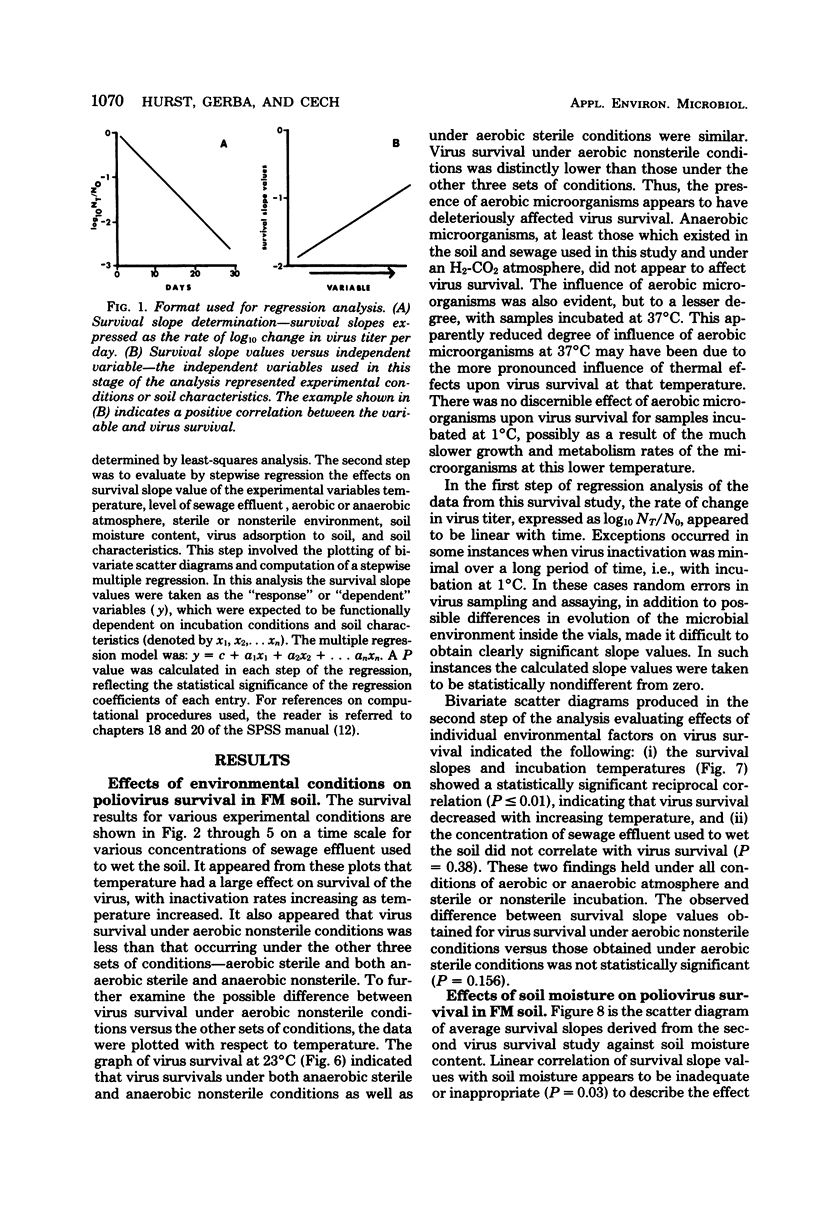
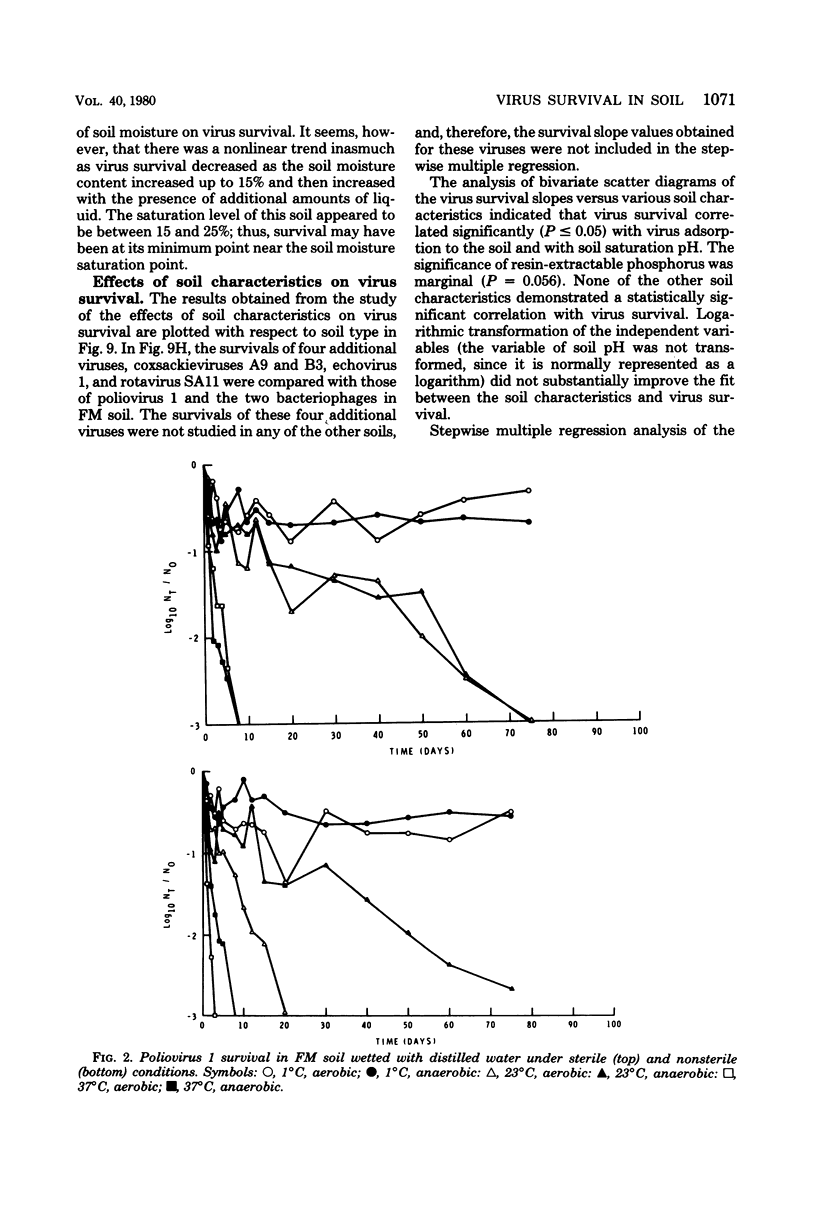
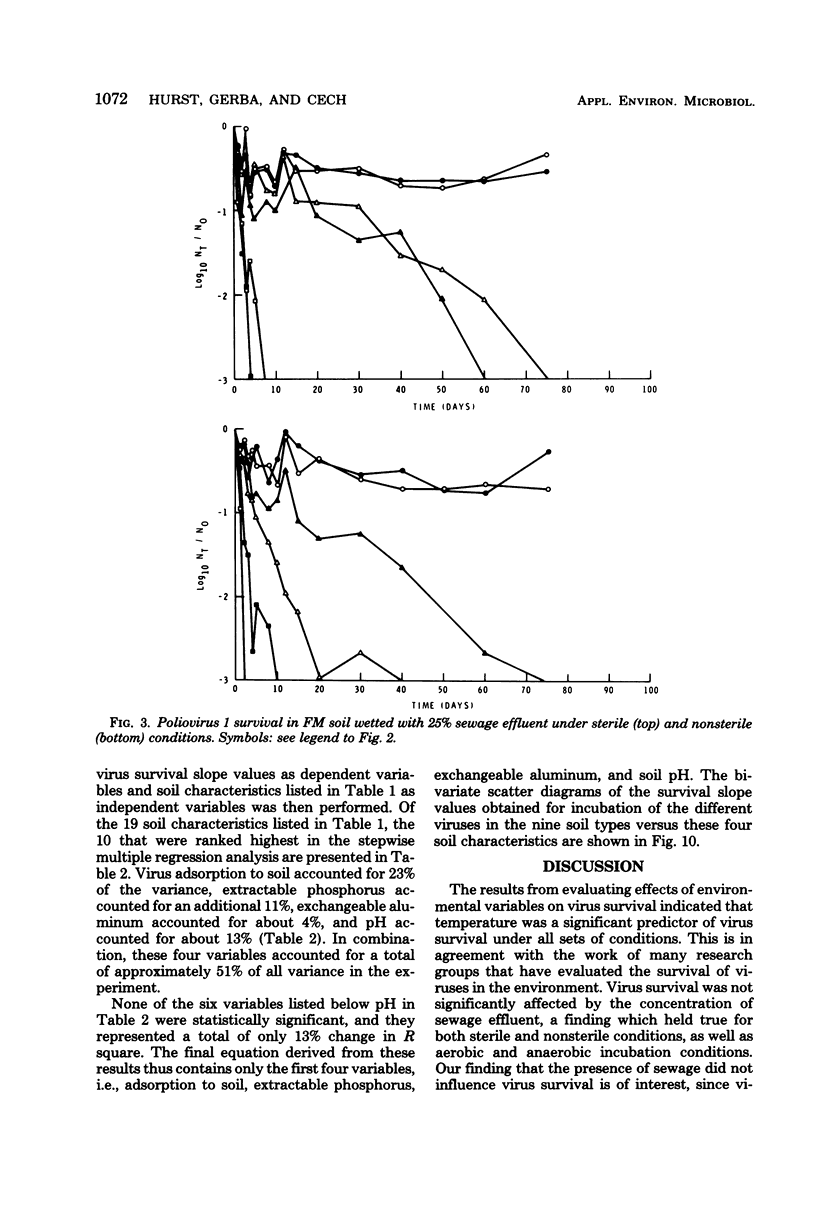
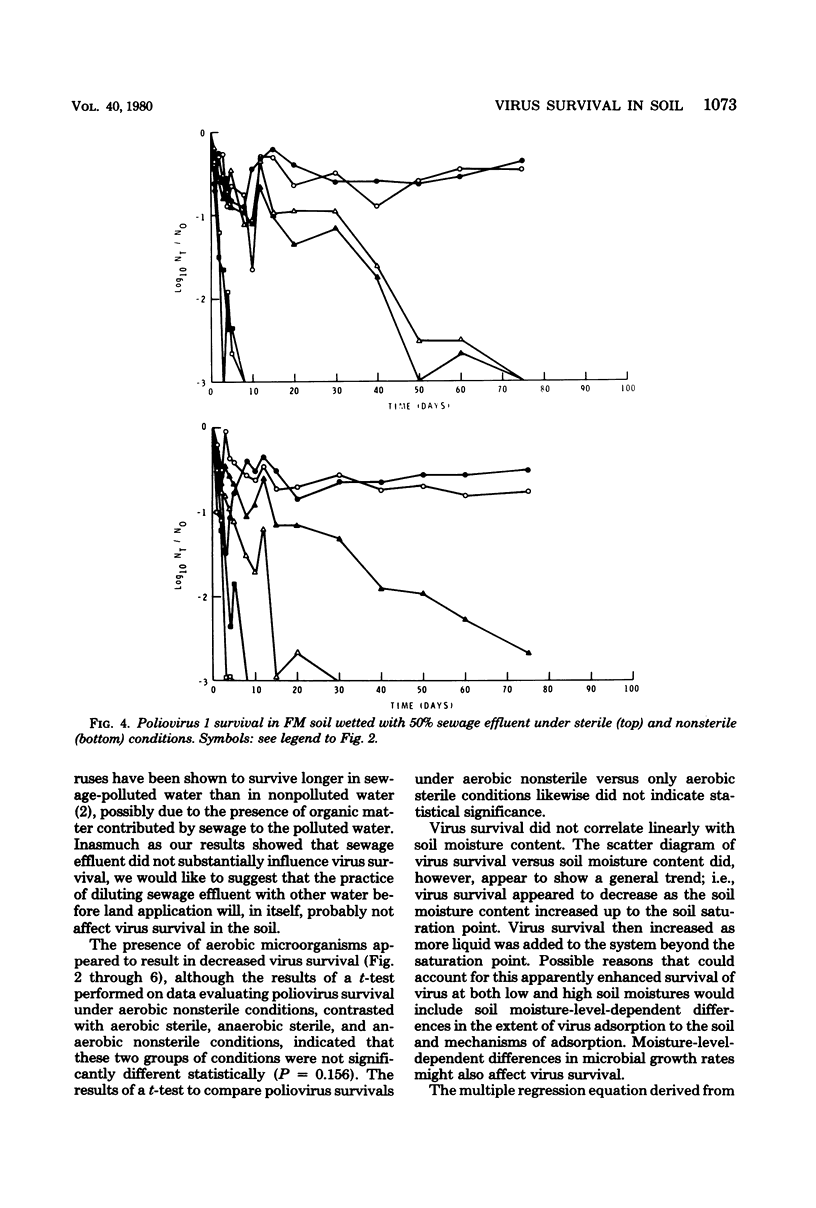
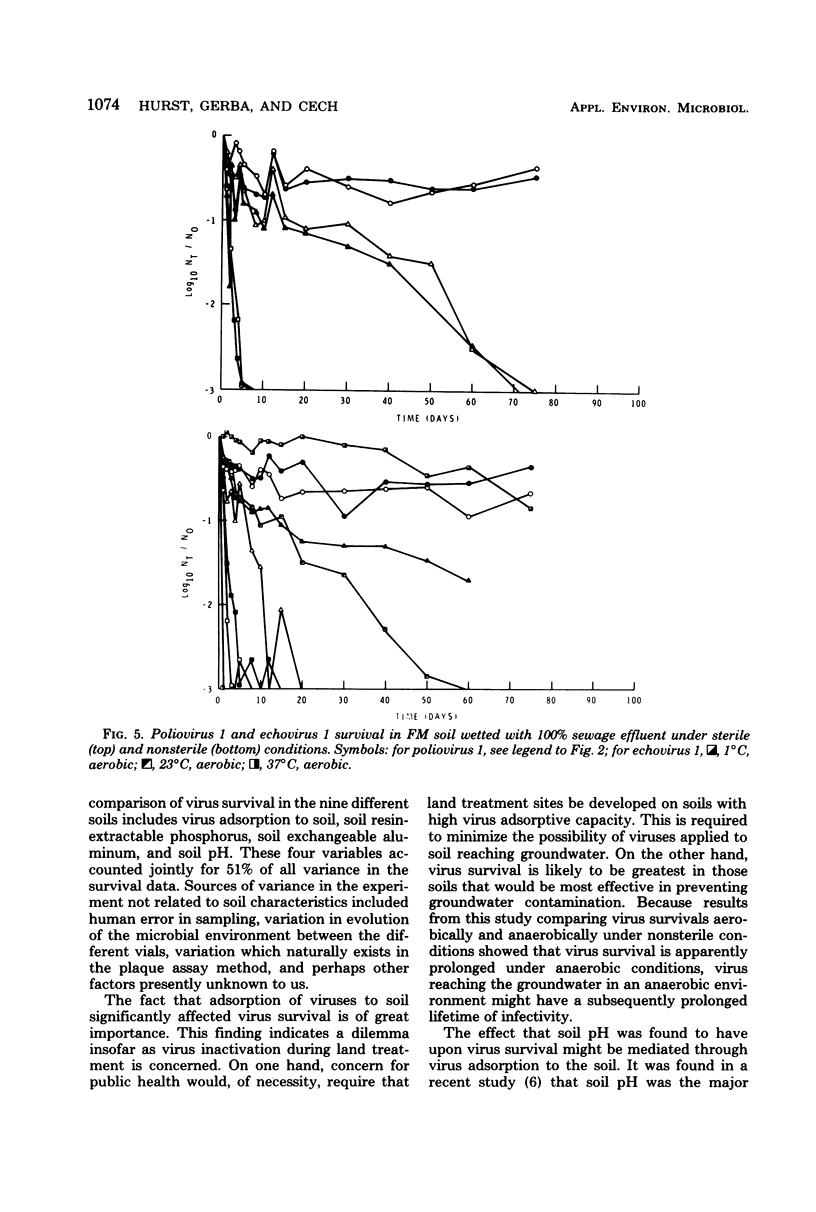
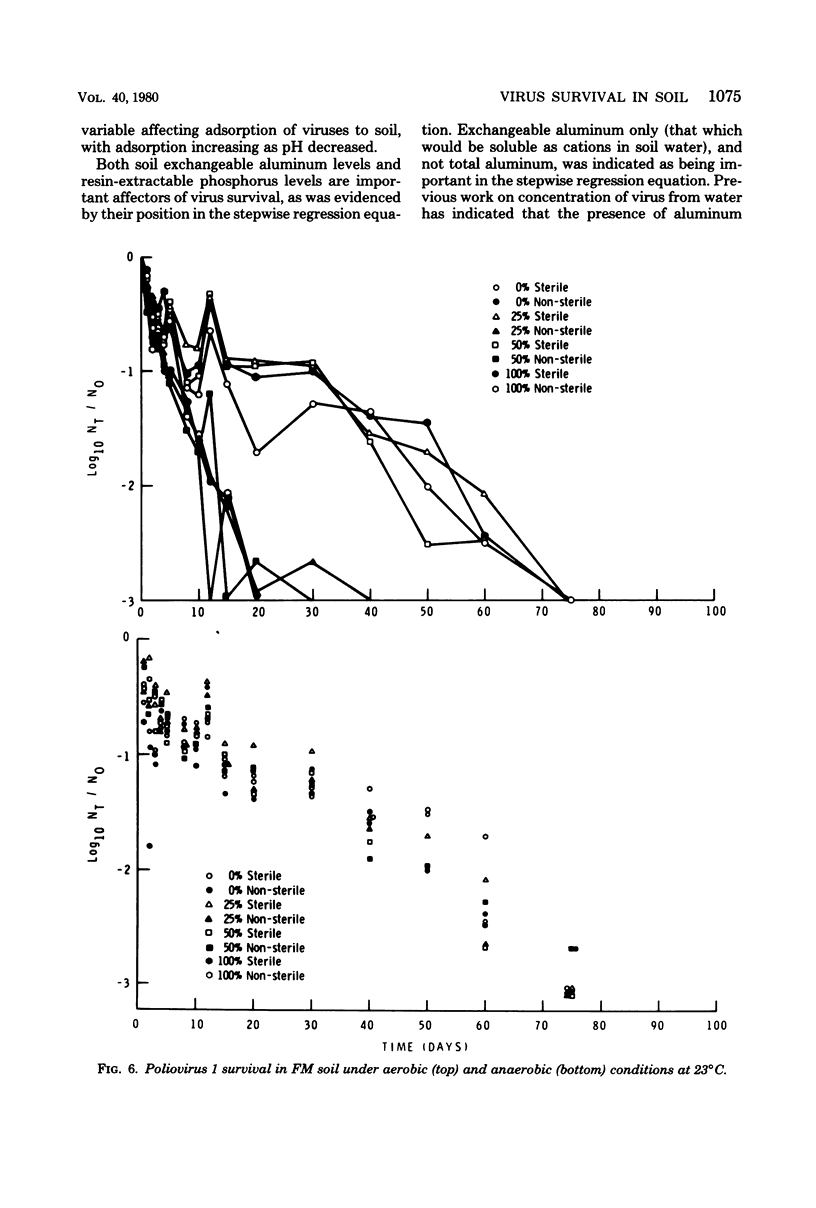
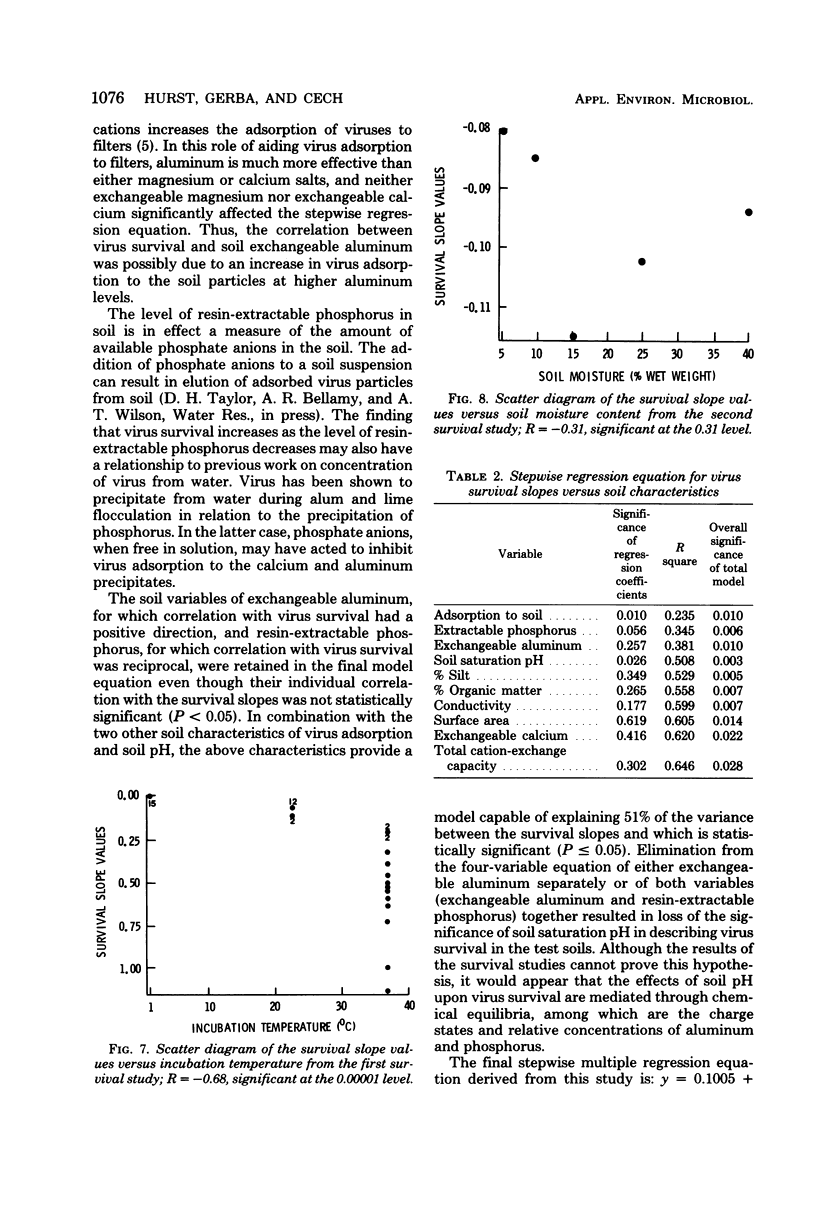
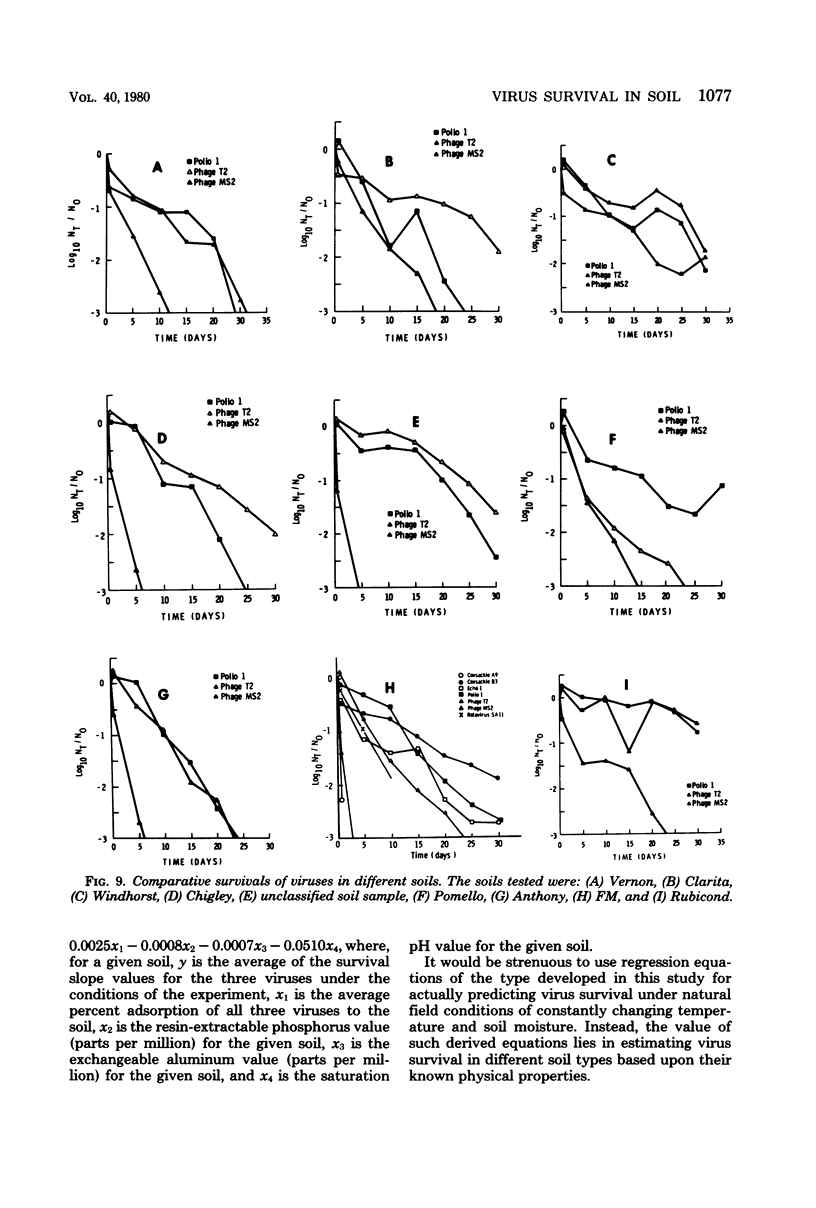
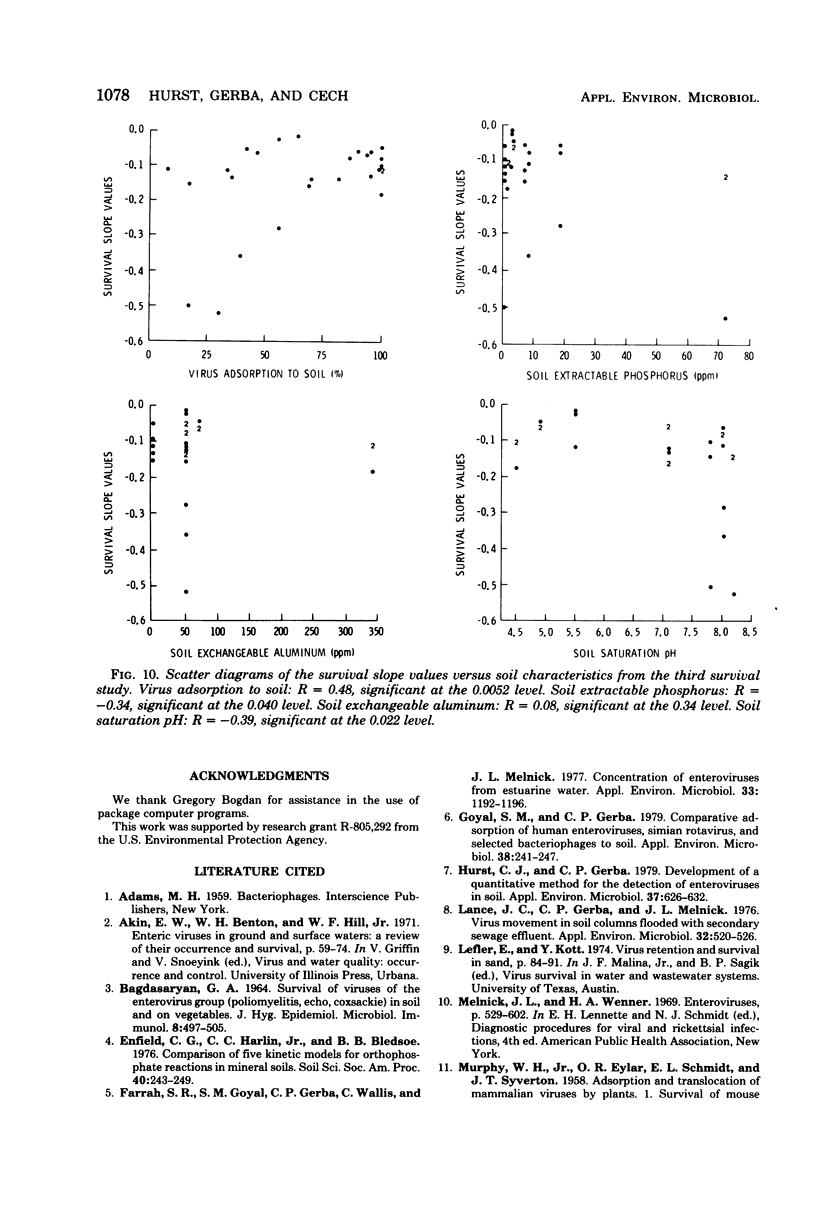
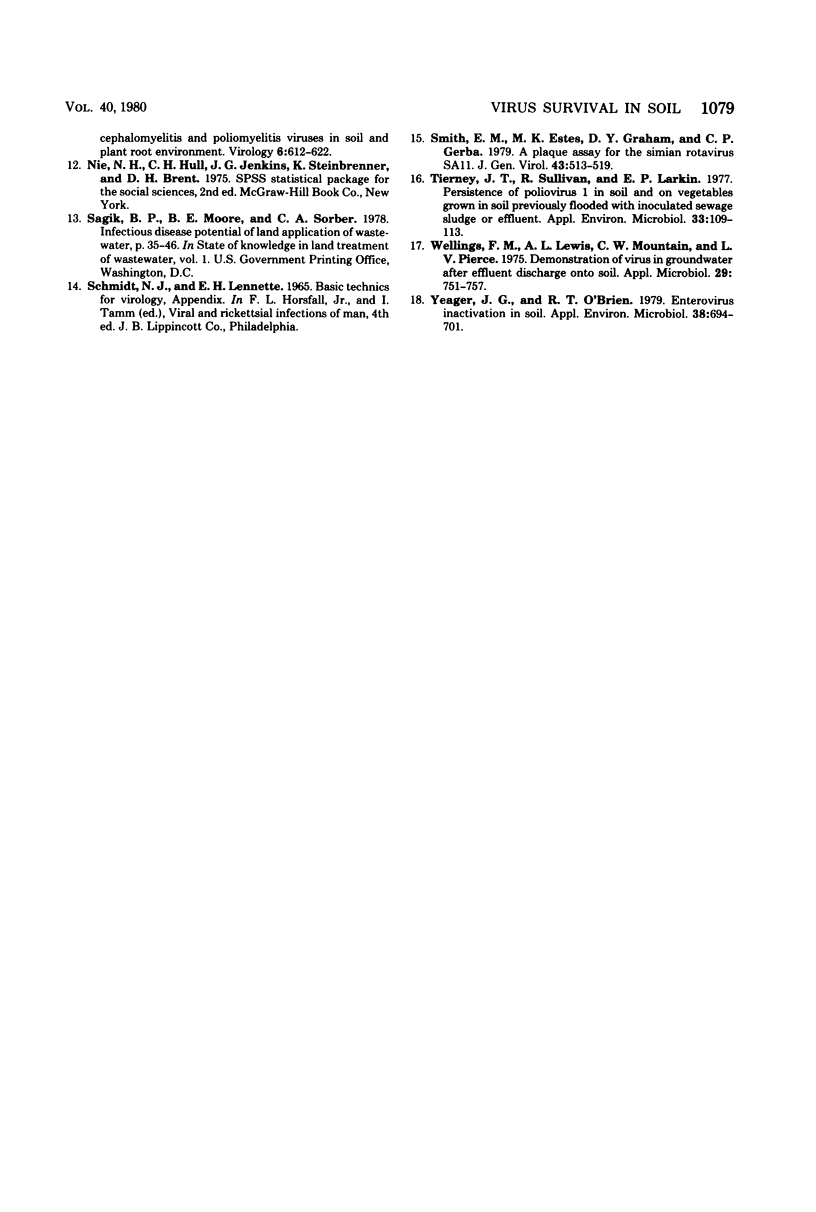
Selected References
These references are in PubMed. This may not be the complete list of references from this article.
- BAGDASARYAN G. A. SURVIVAL OF VIRUSES OF THE ENTEROVIRUS GROUP (POLIOMYELITIS, ECHO, COXSACKIE) IN SOIL AND ON VEGETABLES. J Hyg Epidemiol Microbiol Immunol. 1964;8:497–505. [PubMed] [Google Scholar]
- Farrah S. R., Goyal S. M., Gerba C. P., Wallis C., Melnick J. L. Concentration of enteroviruses from estuarine water. Appl Environ Microbiol. 1977 May;33(5):1192–1196. doi: 10.1128/aem.33.5.1192-1196.1977. [DOI] [PMC free article] [PubMed] [Google Scholar]
- Goyal S. M., Gerba C. P. Comparative adsorption of human enteroviruses, simian rotavirus, and selected bacteriophages to soils. Appl Environ Microbiol. 1979 Aug;38(2):241–247. doi: 10.1128/aem.38.2.241-247.1979. [DOI] [PMC free article] [PubMed] [Google Scholar]
- Hurst C. J., Gerba C. P. Development of a quantitative method for the detection of enteroviruses in soil. Appl Environ Microbiol. 1979 Mar;37(3):626–632. doi: 10.1128/aem.37.3.626-632.1979. [DOI] [PMC free article] [PubMed] [Google Scholar]
- Lance J. C., Gerba C. P., Melnick J. L. Virus movement in soil columns flooded with secondary sewage effluent. Appl Environ Microbiol. 1976 Oct;32(4):520–526. doi: 10.1128/aem.32.4.520-526.1976. [DOI] [PMC free article] [PubMed] [Google Scholar]
- Smith E. M., Estes M. K., Graham D. Y., Gerba C. P. A plaque assay for the simian rotavirus SAII. J Gen Virol. 1979 Jun;43(3):513–519. doi: 10.1099/0022-1317-43-3-513. [DOI] [PubMed] [Google Scholar]
- Tierney J. T., Sullivan R., Larkin E. P. Persistence of poliovirus 1 in soil and on vegetables grown in soil previously flooded with inoculated sewage sludge or effluent. Appl Environ Microbiol. 1977 Jan;33(1):109–113. doi: 10.1128/aem.33.1.109-113.1977. [DOI] [PMC free article] [PubMed] [Google Scholar]
- Wellings F. M., Lewis A. L., Mountain C. W., Pierce L. V. Demonstration of virus in groundwater after effluent discharge onto soil. Appl Microbiol. 1975 Jun;29(6):751–757. doi: 10.1128/am.29.6.751-757.1975. [DOI] [PMC free article] [PubMed] [Google Scholar]
- Yeager J. G., O'Brien R. T. Enterovirus inactivation in soil. Appl Environ Microbiol. 1979 Oct;38(4):694–701. doi: 10.1128/aem.38.4.694-701.1979. [DOI] [PMC free article] [PubMed] [Google Scholar]


